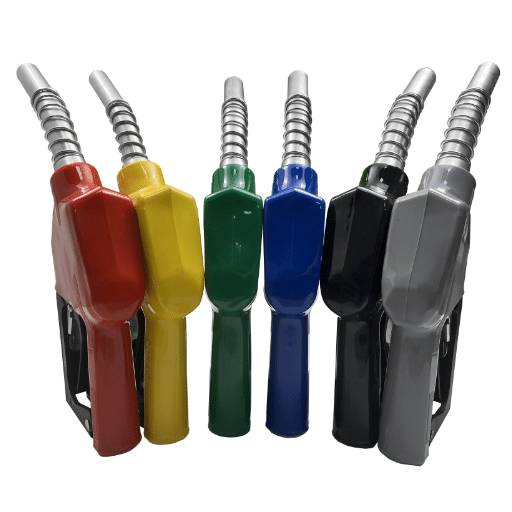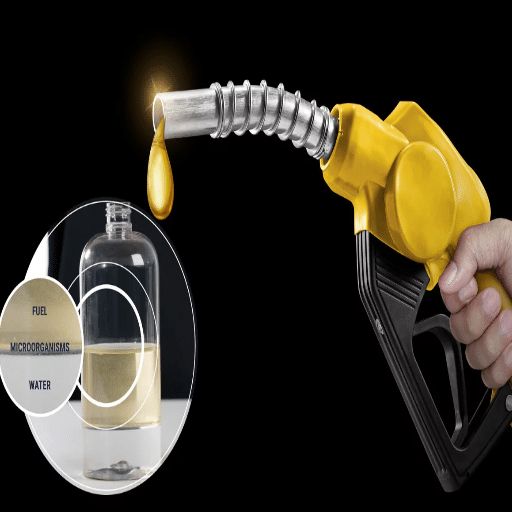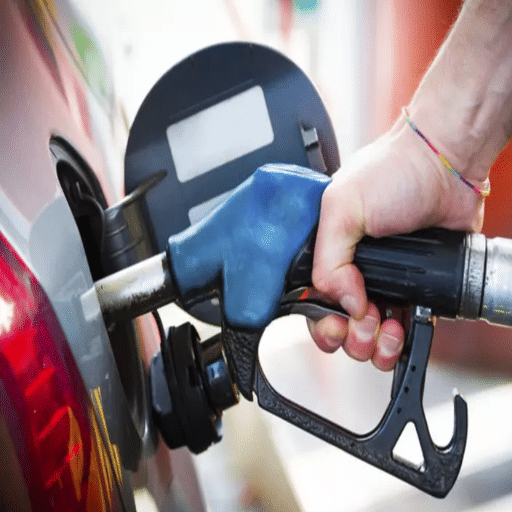The gasoline finding its way to millions of vehicles across the globe is something so much imprinted in our lives that people do not usually look beyond the price and octane rating. One lesser-known fact about gasoline is that it can have a very different color depending on its grade or type. Just understanding what colors characterize regular gas—and how it differs from those typologies—will also shed light on its composition, manipulation, and uses. The idea here is to break down the science that explains why gasolines are colored in a certain way and to give you a low-down on various fuel types, their color determinism, and why it all matters so much to vehicle performance and safety.
Introduction to Gasoline and Its Color
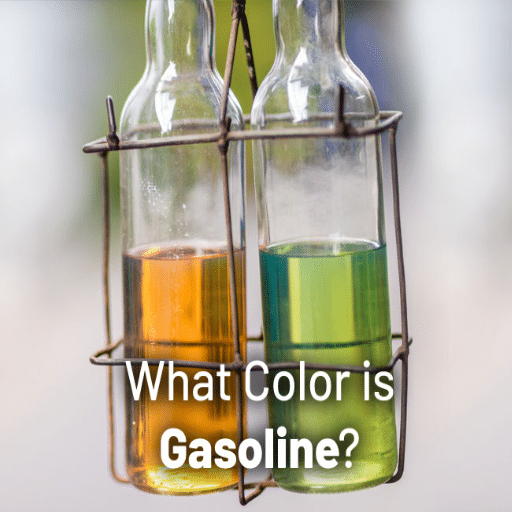
The addition of dyes affects the color of gasoline during the refining process. Regular gasoline is usually clear or slightly yellow colored, while premium gasolines might have very different colored indications because of certain additives that are meant to improve performance. None of these colored signals are natural since most of them are done purposefully during the making to aid in gas identification and keep undesirable substances out of the way during distribution. Gasoline’s coloration generally has little effect on the running of gasoline itself; however, it serves as a very practical method of differentiation of types and grades, and in ensuring its suitability to be used in the prescribed apparatus.
What is Gasoline?
Gasoline is a refined petroleum-based fuel chiefly geared for internal combustion engines used in vehicles. It is sourced from crude oil via fractional distillation, which is followed by processing of certain kinds of blending and additives for boosting performance and reducing emissions, and enhancing storage stability. The fuel is mostly made up of hydrocarbons, and in some instances, oxygenates, including ethanol, are sometimes added to meet certain regulatory standards and environmental needs. The spec is its octane number gauge of the resistance of the gasoline to knocks during burning. Gasoline formulas could be considerably different in various parts of the world, supporting regional regulations, climatology, and motor specifications.
The Importance of Gasoline Color
Gasoline color is an important indicator of its type, quality, and planned use. To distinguish among types of gasoline, like regular, mid-grade, and premium, and to differentiate between gasoline and fuels like aviation gas or off-road diesel, various dyes and colors are used by fuel manufacturers. This visual indication ensures proper use and minimizes the chances of a misfill that could lead to engine damage or regulatory non-compliance. Regulations established by some countries or international organizations may necessitate color coding for ease of identification during transportation and storage. While the color of gas does not necessarily in any way an abrupt color change may be an indicator that there is a contaminant, deterioration, or presence of impurities, thereby signaling a need for immediate action to guarantee safe and efficient operation.
Common Types of Gasoline
Gasoline is usually classified by its octane rating, which is indicative of the fuel’s tendency toward engine misfiring when undergoing combustion. The three primary types of gasoline are usually available in most markets:
Regular Gasoline (87 Octane): Regular gasoline is probably the most commonly used fuel due to its cheaper production cost and its being suitable for most forms of vehicles. The performance chemistry from the gas interacts with the octane ratio of the engine itself, keeping in mind that overall octane should match the specific vehicle’s design requirements, in combination with maintaining the balance between delivering the most performance, power, and economy.
Premium Gas (91–94 octane): Premium Gas (rated between 91 and 94 octane) is specifically designed for cars, trucks, and SUVs featuring high-compression engines. The higher octane fights off knocking to yield a smooth drive and power of maximum power. Since this fuel burns a hole in your already-drained coffers, these engines are run explicitly according to the design parameters of these premium grades.
Only the gasoline that meets specific requirements for a particular engine design and running conditions serves the purposes for which it is meant. Correct octane-level fuel offers useful chances for superior output, minimum damage, and satisfying the manufacturer’s terms and conditions.
Regular Gas and Its Characteristics
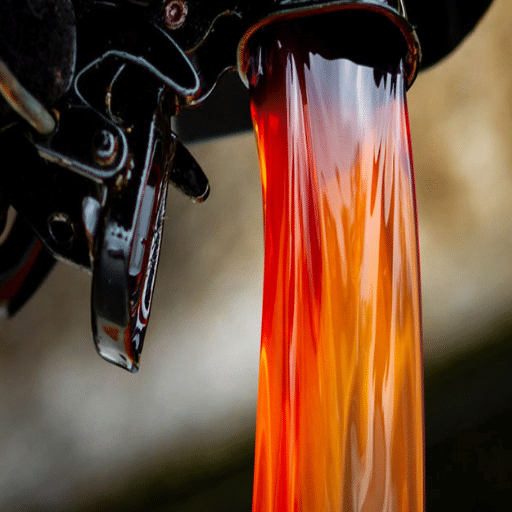
Typically known as 87-octane fuel, regular gasoline is the most frequently used fuel type for a standard internal combustion engine. It is formulated to meet the requirements of most passenger vehicles without engine knock under normal operating conditions. Regular gas is cheaper than premium fuel, and hence is an economical choice for most drivers, especially when their vehicles are meant to run most efficiently on this fuel. Always refer to the automaker’s recommendations to ensure optimal performance and avoid potential engine damage.
What is Regular Gas?
Regular gasoline, also known as 87-octane fuel, is the refined petroleum fuel used in vehicles, which are conventionally powered by gasoline engines, to ensure that sufficient energy is supplied to the engine without any pre-ignition. The gasoline of this type is usually cheaper when compared to premium fuel options and constitutes a suitable fuel source for vehicles that are not designed to use a high-octane fuel to function properly. Regular gasoline serves best, therefore, in meeting the needs of most vehicles utilizing gasoline engines, is equipped with industry-standard physical properties governing its performance, although the manufacturer’s specifications regarding the vehicle should be closely monitored, so as to ensure conformity and efficiency of performance by the engine.
Color of Regular Gasoline
Regular gasoline color is typically clear or very slightly amber in color. This light color is due to the refining process, as natural gasoline is clear; however, dye-borne additives for routine identification and regulatory needs have been used. Most regions do not mandate any specific dye for regular gasoline, as different shades subtly differentiate it from other grades of fuel. Such distinctions do not affect the fuel’s performance or chemical properties but may help identify different fuel types during storage or transport.
Factors Affecting Gasoline Color
Two known causes of variation in the color of gasoline are the use of dyes, which impart different colors under specific conditions, and the influence of the refining process and crude oil. The addition of dyes into gasoline is usually done to differentiate between gasoline grades, namely regular, mid-grade, and premium, or for regulatory reasons, such as marking fuel for use off-road versus on-road. The refining process can subtly affect gasoline color since many refining process components can have a small effect on the color of gasoline, depending on the complexities of handling and equipment. Generally, the color of the gasoline is influenced by the nature of the crude, whether it is heavier or lighter, and may give birth to a base fuel having a discrete shade of color as manipulated by the addition of dyes. After taking all factors under careful consideration, gasoline exhibits a wide range in color while its engine compatibilities are maintained.
Understanding Unleaded Gas
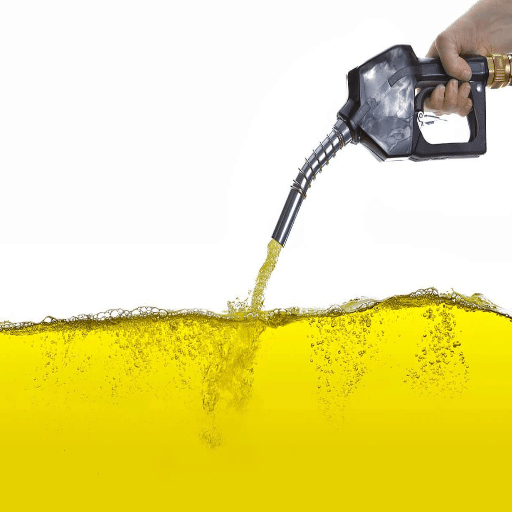
Unleaded gas is a form of combustion fuel that does not contain any compound of lead, commonly used to improve engine performance and decrease engine knocking. The removal of lead from gasoline was introduced for the sake of reducing harmful emissions and their external consequences on health and the environment. Instead of lead, there are now quality additives in modern unleaded gasoline, like ethanol or detergents to increase the octane number and thereby engine efficiency while, at the same time, keeping combustion still clean and safe. Unleaded gas meets the benchmarks for environmental safety and is therefore in widespread use in most vehicles for a better quality of air.
What is Unleaded Gas?
Unleaded gasoline, or more recently, unleaded gas, is blended in a refinery to contain no tetraethyl lead, behemoths of most gasolines of yore. The additives advanced by organohalides, organometallic additives, followed by later phases of rural lead. Unleaded fuel is produced from ethanol, reformulated to oxygels, and deterged with a view to cleaning fuel air, reducing emission levels, and combustion efficiency. This scenario — led fuel to unleaded fuel — became most identifiable due to environmentalists’ gravest concerns– at their worst-ever level. All in all, the phase brought with it a horde of regulations, before being totally abandoned. Hence, a lot of unleaded gas has no clear trace of lead. This particular action was more to come for cleaner air to update the atmosphere and emission standards while still permitting the motor to run in perfect condition.
Unleaded Gasoline Color and Quality
Natural gasoline is usually colorless or pale yellow. However, different fuel grades are colored by the manufacturers or distributors with distinct names so as to easily distinguish them from one another, as well as to adhere to certain regulations. Therefore, it is easier to spot a particular type of fuel when higher-octane gasoline may have a very slight tint that can be attributed to the additives used during its manufacture.
In terms of quality, the basic element of unleaded gasoline is its octane rating, which defines the gasoline’s resistance to knock during combustion. A higher octane rating indicates better motor performance, especially in high-compression or high-speed engine designs. Further quality elements include those presumably related to volatility, cleanliness, that is, promoting very low carbon deposits, and therefore actually being free of compounds such as water and sulfur. Induction of quality maintenance rests on the firm adherence to a rather stern regime of refining practice and conformance-based testing to government and even industry-quality standards.
Comparing Unleaded and Premium Gasoline
Performance and Efficiency Differences
Regular unleaded gasoline, usually rated at 87 octane, is formulated for standard engines with low to moderate compression ratios. It provides enough combustion stability for normal driving while being cost-effective. On the other hand, premium unleaded gas has a higher octane rating, notably around 91-93, which significantly helps withstand premature ignition or “knocking” in high-compression engines and is, thus, necessary in high-performance vehicles or luxury vehicles in which modern engine designs need greater resistance to pre-ignition.
Engine Protection and Longevity
Premium gasoline has a more advanced set of additive formulations that help reduce carbon deposits and keep the engine clean. The use of premium gasoline will play a significant role in the long-term reduction of wear and fuel-related troubles within engines designed mainly for such fuels, while it may add very little or nothing if used on basic engines.
Price
Economic considerations will side with the normal unleaded gasoline being less expensive and available at many retail outlets for the majority of normal vehicles. It is expensive for premium gasoline and is only recommended in cases where the manufacturer demands it. In most cases, premium fuel used in cases where it is not necessary will not give enough advantages to justify the extra cost.
Global Warming Impacts
The environmental impacts in the case of both fuel types regarding emissions are somewhat identical, but in an assortment of grades of fuel, there are cues for advanced additives that minimize inhibitory engine services and improve performance, which would ultimately make the engines even cleaner in due time. This is a very marginal benefit if not realized completely in any vehicle not optimized for running on premium gasoline.
Common Questions about Gasoline Color

There are several methods employed by car and chemical companies to add color to gasoline. Probably black was the earliest gasoline color as it was viewed as a reference to one of its attributes-ignition system firing by sparks. Across fuel production along distribution, the addition of gasoline dye facilitates the differentiation of both types of gasoline for their intended applications. For example, regular gasoline is generally clear or slightly yellow, while premium gasoline can have better shades of colors, like light purples. Diesel fuel and other formulated fuels have several colors in order to distinguish them easily. Dyes are only for distinction but will not alter the properties of fuel; also, they are useful in guaranteeing the standards of the law and contribute to averting mistakes in iodine fuel mixing.
What Color is Gasoline?
In general, gasoline is colorless to light amber, but the exact color may vary on account of dyes that manufacturers use to set their products apart from others. These dyes are primarily added for legal requirements to differentiate between fuel types and grades. For example, certain types of regular gasoline are colorless, but higher-grade varieties might display a much darker color. Additionally, other types of fuel, especially dyed diesel, come in striking colors like red or blue in compliance with tax or proper-usage regulations. These colored fuels have the same chemical properties as their colorless counterparts and work similarly as well when burnt in an engine, but they are identified by their color for different uses.
Why Does Gasoline Have Different Colors?
The coloring of gasoline is mainly for easy identification and regulatory purposes. It helps differentiate various kinds of gasoline on the market and ensures that the appropriate tax and usage laws are being fully complied with. See-through gasoline or lightly colored is commonly used in user vehicles that are popular today, while dyed fuels that are bright red for duty cars or red diesel are commonly employed in the arena of untaxed or off-road use. This innovative dye makes it incredibly easy on the part of law enforcement agencies to see inappropriate use or tax dodging activities, as well as helping refineries, distributors, and consumers to recognize and sort out different fuel grades or formulations. Conversely, such materials have no impact on the fuel’s performance or chemical properties.
How to Identify Bad Gasoline
Despite the modern techniques in quality control and the advanced technology in sampling and testing, there are some widespread problems that continue to face the gasoline supply markets. For example, there have previously been far too many instances of gasoline contamination, whereby a storage tank and the fuel it contains become the recipient of undesirable chemical addition and labeling during shipment; this has been the unhappy experience of a good gas station manager somewhere. Consequently, there should be a concerted effort on the part of those who are responsible for assigning blame.
If bad gasoline is suspected, you must visually inspect the fuel inside a clear glass container in a well-ventilated area. Watch for phase separation or water contamination, often showing as a visible layer at the bottom. Gasoline left in storage for longer than the said shelf life of three to six months (dependent on additives and quality of storage) is likely to be compromised. One may consider disposing of the fuel that has been adulterated according to local regulations to dodge engine damage and environmental harm. If a fuel stabilizer is used, it would surely prolong its shelf life and overcome problems with degradation.
Conclusion: The Significance of Understanding Gasoline Color
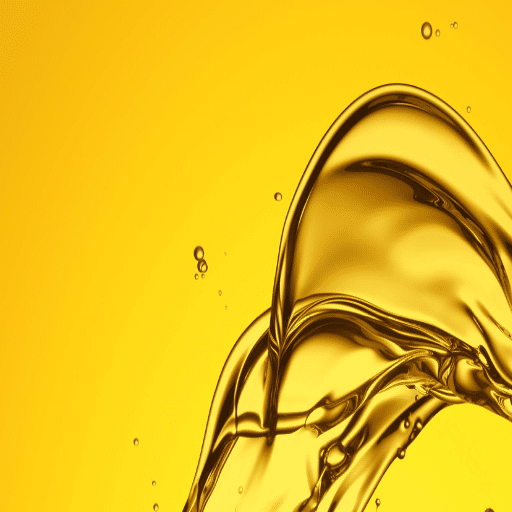
Understanding the color of gasoline is very critical as it serves as a visual indicator of quality and usability. A color change may indicate contamination from external sources, water entry, or deterioration due to age, all of which may impact engine performance and safety. It is essential to be vigilant about regular inspection and proper storage of gasoline because this operational attitude helps in maintaining the well-being of the plant and equipment and environmental norms. Knowing the factors at play encourages consumers to make smart decisions and to keep their fuel systems in good shape.
Impacts on Vehicle Performance
The cleanliness and general quality of gasoline can majorly affect the overall performance, efficiency, and even the longevity of a car. Failure to maintain high-quality gasoline may cause improper auto-correction. It may pose the risk of poor engine performance, sluggish acceleration, and difficulty starting the same engine. Reduced fuel flow and decreased efficiency, the accumulation of dust and dirt in fuel filters, and injectors are among the fuel problems. The misuse of fuel storage or application of blended gas with a lot of ethanol may cause a condition called phase separation, meaning water comes off the fuel to induce the eventual damage of the engine; for example, by corrosive action. Understandably, it is thus very essential to carefully control the quality of fuel in the prevention of costly repairs and trouble-free operation of high-tech, modern engines wielding direct fuel injection without compromise to fuel quality and adulterants. Consequently, maintaining a steady supply of clean, premium gasoline is a must for upkeep of the engine and protection of vehicle gas mileage.
Choosing the Right Fuel Type
I always refer to the recommendations of the manufacturer stated in the owner’s manual when selecting a possible fuel type for my vehicle; this way, I ensure that the octane rating is correct for my engine, which is essential for optimum engine life and performance. Besides octane ratings, I am also particular about choosing a type of fuel that does not contain ethanol, and as much as possible, steer clear of fuel containing different car pretentious or other blends inside the tanks of service stations. These factors go a long way in minimizing damage potential from engine knock or aggravated wear and tear in the long run, too.
Final Thoughts on Gasoline Color
The color of gasoline is often a feature that is easy to recognize, although it does not give hints as to the quality or performance of a fuel. The color of gasoline is the result of coloring agents added to fuel by manufacturers or government oversight bodies to distinguish between fuel types and grades. For instance, regular gasoline is often given a pale shade of yellow or green, while aviation gasoline is colored most startlingly for its identification. These color codes do little else other than offer a visual clue; they do not affect the chemical properties or the efficiency of the engine.
The focus should fall onto fuel requirements and quality rather than the colors it comes in. Checking the expected octane rating and ensuring that the fuel corresponds with the type required by the vehicle is even more important for the maintenance of health as well as operations. Never use old or contaminated gasoline, as it may have a different color or smell, which is usually an indicator that the quality has degraded and could harm your engine if used.
It would protect your engine and keep the car reliable over time if you can employ a fuel grade above, considering something as visible as the color from the manufacturer.
Reference Sources
Frequently Asked Questions (FAQs)
What color should the coloration of gasoline be if it were mixed with conventional petroleum products?
In general, conventional gasoline (usually 87 octane with some ethanol added to the mixture) is typically a clear or light yellowish beverage, although fresh gasoline might look totally transparent or pale yellow. Now this clear liquid will either completely lose its color or go pale if some impurity remains in the contaminated portion, be it a dye, some oil substances, or a few more combinations. So in the rest of these situations, gasoline is a clear to slightly yellow-colored derivative of petroleum, and oil can change its appearance.
Does the octane rating influence the color of gasoline for regular and premium fuel forms?
The color of gasoline is not influenced by the octane rating of the fuel: in most areas, low-octane-rated (usually 87 octane) unleaded gasoline is a clear-colored substance, mixing some refinery additives even where finally technically qualified gasoline grades will not differ in color-so in the first case, every shade of yellow for any level of quality, while any discrepancy is due to cyan dyes or stabilizers provided from the gas station, not from the octane content.
Could gas and oil mixed make up a different color of gasoline in liquid petrol?
Yes, gasoline mixed with oil changes the look of the oil. Rather, mixed fuel turns darker and may be brownish or cloudy as opposed to the usual clear to pale yellow. This is widespread with two-stroke engine mixtures for motorcycles and boats, whereby gasoline added for its fuel actuality is blended together with oil for lubrication purposes, and the presence of oil influences the color’s brightness and shade.
How do fuel options at the gas station indicate different gas types and colors?
Different grades of gasoline at gas stations are shown by labels and nozzle colors assigned between fuel options, which include regular, midgrade, and premium. The actual color of the fuel is usually similar between different grades; however, certain stations put dyes into fuel for tax or usage identification. Hence, fuels are seen as greenish, bluish, or yellowish, depending on the state or place’s regulations and the fuel type (diesel might have different dyes).
Are diesel fuel and regular gasoline the same color, and what is the appearance of diesel fuel in general?
Both diesel fuel and regular gasoline are petroleum-derived liquids, but generally differ in color and viscosity: diesel is more often colored dark, but is variably clear to pale yellow to even a slightly brownish hue, along with being thicker in viscosity relative to gasoline. Diesel is colored with dyes to create a noticeable difference from gasoline, i.e., on-road diesel is often yellowish, while red diesel is reddish compared with gasoline.
Could the fuel color imply a chemical composition or even a contamination that could harm the engine?
Yes, some uncommon colors such as very dark, greenish, or turbid are indicators of contamination, water presence, age of fuel, gasoline combined with oil, or various damages leading to the malfunctioning of an onboard engine. In more detail: water contamination or one fuel mixed with another, darkening of gasoline or marine gas upon oxidation, a fall off in fuel consumption, and potential damage to the fuel systems and fuel components where the contaminated fuel is being used in a car or bike.

